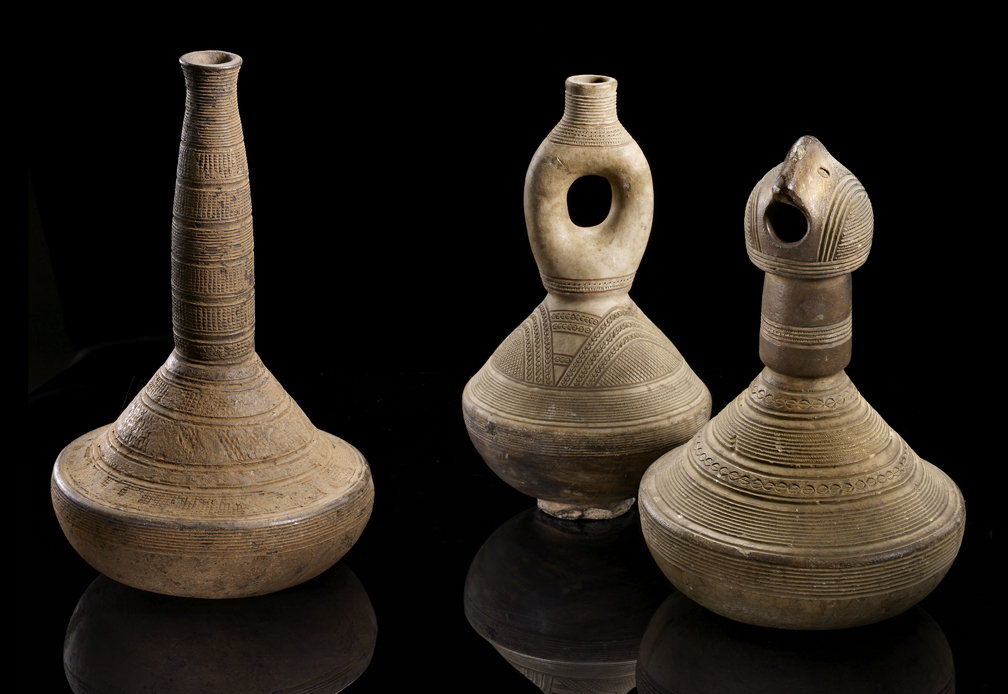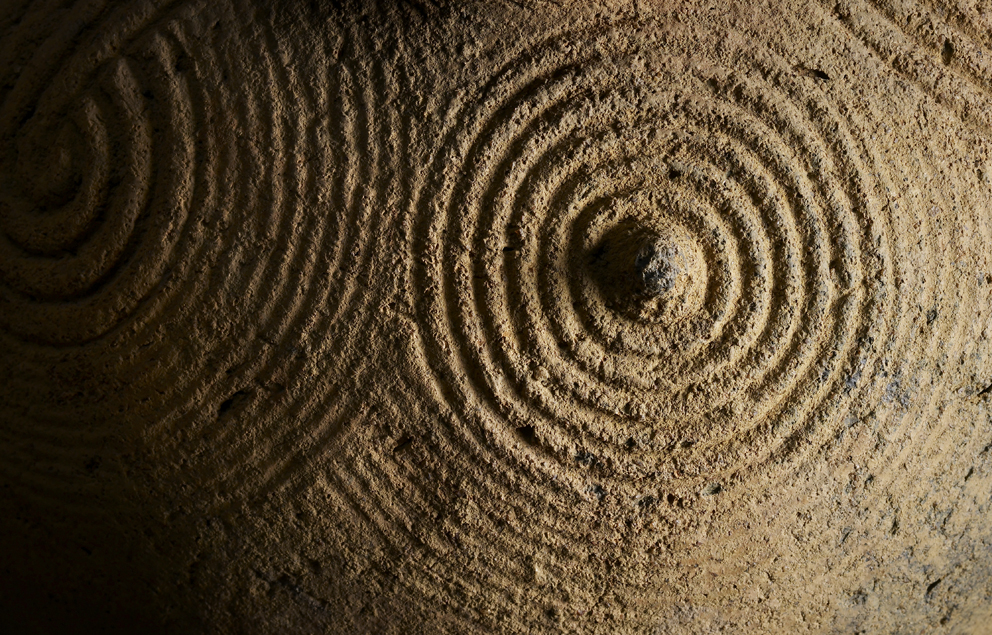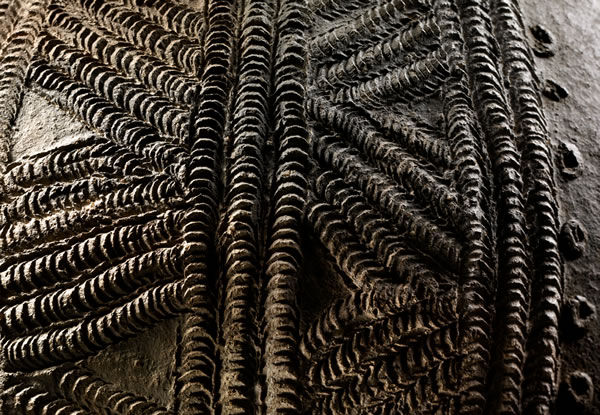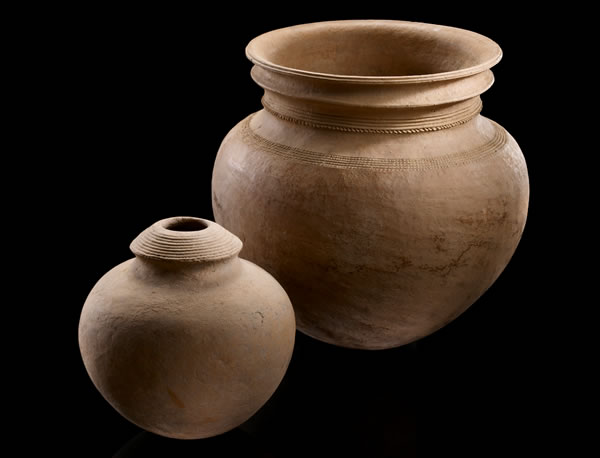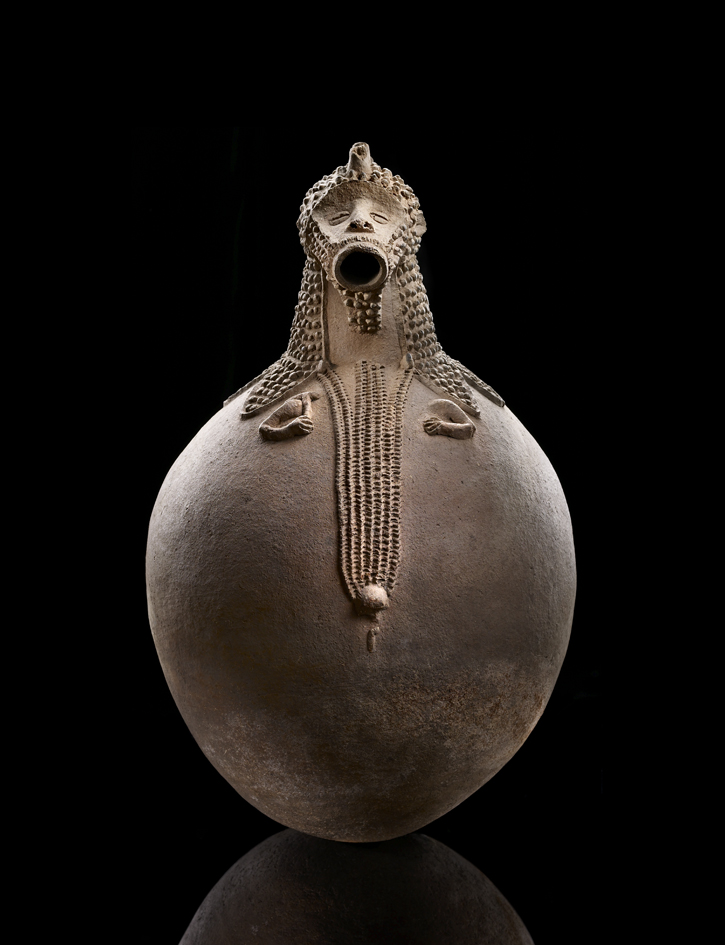
A strange silhouette looms in the distance out of the dust swirling up from the track. Suddenly, a figure emerges swaying gracefully under the weight of a brown jar. This perfect balance, carried off with such ease, is one of the beautiful symbols of Africa. The continent has been celebrating the earth, source of life, from time immemorial. How many legends tell the story of the divine creation of the first man, modelled out of clay by the Divinity? The potters’ glistening wet hands take their turn to tame the earth and softly transcend it. Curvaceous bodies are born, perpetuated by the heat of the flames. Terra cotta is not solely synonymous with a vessel, a domestic object. It comes in an infinite variety of shapes, thanks to the pliancy of the clay and the extraordinary creativity of its creators. The vessel often dons a disguise and takes on anthropomorphic features. Sometimes the clay comes in a human form, troubling us by imitating a face and becoming a portrait. Terra cotta objects, recipients or figures, not only accompany men and women in their daily routine but also they carry out the rites of passage that give rhythm to their lives. Thus, birth, initiation, marriage and death have a special relationship with terra cotta, according to the various African cultures, in the form of pots or sculptures. As prestige objects they attest to an individual’s privileged standing in society and they are the ultimate intermediaries establishing the sacred link between the world of the living and the afterlife.
The ‘African Terra Cotta: a Millenary Heritage’ exhibition at the Musée Barbier-Mueller presents all the facets of ceramics through cultures that vanished thousands of years ago but also highlights traditions that are closely linked with pottery today and still very much alive. This is a cultural heritage whose symbolic power matches its beauty and which leads us on both a historical and a geographical journey throughout Africa – one entity with multiple identities. Sacred and profane vessels, anthropo- or zoomorphic figures, elegant silhouettes and potbellies sweep us up into a whirlwind of colours, textures and ornamental patterns.

